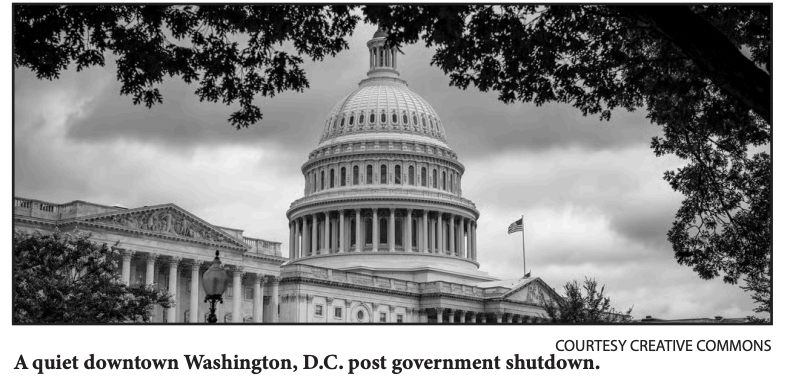On October 1, 2025, the federal government entered a shutdown, following Congress’s failure to pass appropriations or a continuing resolution to fund operations for fiscal year 2026. What began as a partisan stalemate over healthcare subsidies, program cuts, and rescissions has grown into a broader national crisis with wide ramifications for federal workers, non-essential services, and the economy. The root of the shutdown lies in deep disagreements between Republicans who control the House and have strong influence in the Senate, and Democratic senators aligned with the White House. The issues discussed included the fate of the Affordable Care Act, proposed recessions and cuts to domestic and foreign aid, and how to regulate Medicaid funding. In September, the House passed a short-term funding measure to keep the government open until November 21, but it lacked Democratic support in the Senate. With neither side willing to bend, the shutdown became inevitable. Republican leaders have insisted that Democrats “reopen the government first, then negotiate” over healthcare. Democrats and some Senate Republicans have criticized that posture as negotiating in bad faith. According to the Congressional Budget Office, roughly 750,000 federal employees are expected to be furloughed each day, temporarily suspending their pay. Some of the critical functions are able to continue. Social Security payments are unaffected and essential programs tied to health, national security, law enforcement, and air traffic are being carried out, even if staff go unpaid. Other programs and appropriations will be partially halted or their funds will gradually decrease due to the shutdown. As for the Women, Infants, and Children nutrition program, they are expected to exhaust their contingency funds within weeks. State governors are using some of their state funds to keep other services open, such as national parks, museums, or public media outlets. The Essential Air Service subsidy program, which supports flights to rural and remote communities, is also set to expire imminently, threatening connectivity for over 177 U.S. towns. Air traffic controllers– nearly 11,000 of them– are continuing to work without pay. Meanwhile, aviation groups warn that aircraft safety inspections and oversight could face delays. The Trump administration announced a freeze of $26 billion in federal funds destined for Democratic-led states. The freeze includes transit and green-energy project funds, which critics decry as punitive political leverage. A prolonged shutdown is projected to be costly. A White House memo estimates that each week of shutdown could shave $15 billion from U.S. Gross Domestic Product, reduce consumer spending by $30 billion, and trigger tens of thousands of additional job losses. Another estimate from EY Parthenon places the economic toll at roughly $7 billion per week. Aside from lost output, the shutdown is disrupting data releases critical for economic management (jobs data, inflation, etc.). Confidence among consumers and businesses is likewise under stress. The precedent of the 2018–2019 shutdown (which cost the U.S. at least $11 billion) looms over projections for losses here. Public opinion appears tilted against the shutdown. According to polls, 65% of registered voters oppose it; among Republicans, opposition is reportedly as high as 92%. Many Americans blame Republicans more than Democrats for the impasse. In Congress, the Senate has staged repeated procedural votes on competing spending bills (both GOP and Democratic versions), all of which have failed to garner the 60 votes needed to break the stalemate. House leadership has remained largely idle, with Speaker Mike Johnson extending recesses and insisting the House has already done its part. President Trump has claimed openness to compromise on ACA tax credits, though the White House press office denies ongoing direct talks with Democrats. Some GOP senators express guarded willingness to include reforms to health care as part of a deal. Still, the gap between the parties remains wide. With the shutdown dragging into its second week (by October 6), there are a few possible paths out of the impasse: Clean continuing resolution with later negotiations One side may cede ground, passing a “clean” funding extension to reopen the government, with policy debates deferred to a later date. This has been resisted so far by Republicans demanding leverage and by Democrats insisting on guaranteed healthcare provisions in any funding bill. Compromise deal including subsidies and constraints A negotiated package could blend short-term funding with moderate reforms or compromise on ACA subsidies. Some GOP senators have expressed conditional support for that approach, but time is short. Gradual piecemeal funding or “minibus” approach Lawmakers might break the impasse by passing partial appropriations for noncontroversial areas while leaving others unresolved. That approach may require cooperation across party lines. Extended shutdown and forced political concessions If no deal is reached, the shutdown could continue for many weeks, mounting pressure from furloughed workers, economic damage, and public backlash could force compromise — though at considerable cost. Given how many critical functions are affected and the mounting economic risks, the political incentive to resolve the shutdown is strong. But the ideological divide over healthcare and spending, combined with hardline positions, means that any resolution may come only at the last minute. In sum, as of early October 2025, the U.S. government shutdown represents a significant test of governance and partisanship. The standoff over healthcare subsidies, program rescissions, and broader spending priorities has brought federal operations to a standstill, affecting hundreds of thousands of workers and tens of millions of citizens. The damage to public services and economic growth is mounting, and the political pressures are intense. Whether Congress and the White House can bridge their differences in time remains uncertain–but the stakes are rising with each passing day.
Government shutdown not ending anytime soon
CEZZA CARDAROPOLI, News Editor
October 9, 2025
Story continues below advertisement
0


